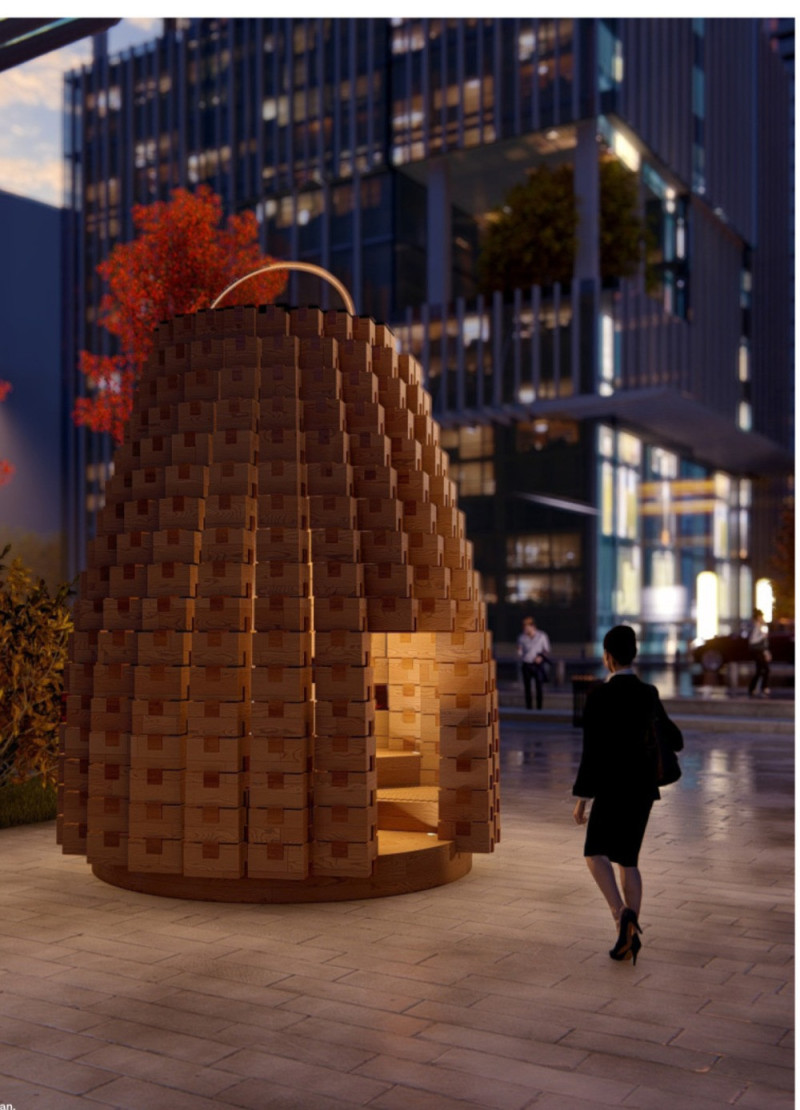5 key facts about this project
The KAERU project embodies the idea of "return" in urban settings, inviting individuals to engage with their communities and reestablish connections often lost in modern life. Its layout features various interconnected spaces that can adapt to different uses, encouraging people to come together or seek personal reflection. The structure serves as a meeting point, workspace, or relaxation area, responding to the evolving needs of urban inhabitants.
Unique Design Approaches
One of the most notable aspects of the KAERU project is its emphasis on modular design, which allows for flexibility in spatial organization. The circular form aids in creating a continuous flow of space, guiding movements and interactions among users. This design choice is heavily influenced by traditional Japanese architecture, particularly the Kofun mounds, but is presented in an abstracted form that resonates with contemporary aesthetics.
Additionally, the use of local materials, such as Japanese wood and wooden plates, reinforces a commitment to sustainability while reflecting the cultural context of the location. The architecture incorporates practices like the Japanese finger joint technique, promoting structural integrity and elegance. Such material choices connect the project to traditional craftsmanship while also ensuring a low environmental impact.
Innovative details further enhance the architectural experience. The integration of skylights enriches the interior with natural light, establishing a relationship between the interior space and the external environment. The construction features a Faraday cage, which adds practicality while maintaining a connection to historical design concepts.
For those interested in a deeper exploration of this project, additional insights can be gained by reviewing the architectural plans, sections, and designs that illustrate the unique qualities and ideas embedded within the KAERU project. Observing these elements will enhance understanding of its spatial organization, materiality, and overall design philosophy.























